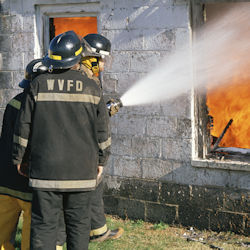The SDS Form
Section 5. Fire-Fighting Measures
This section provides recommendations for fighting a fire caused by the chemical. These recommendations include:
- Suitable extinguishing equipment and information about extinguishing equipment that is not appropriate for a particular situation.
- Advice on specific hazards that develop from the chemical during the fire, such as any hazardous combustion products created when the chemical burns.
- Recommendations on special protective equipment or precautions for firefighters.

Section 6. Accidental Release Measures
This section provides recommendations on the appropriate response to spills, leaks, or releases. It includes containment and cleanup practices to prevent or minimize exposure to people, properties, or the environment. These recommendations include:
- Use of personal precautions and protective equipment to prevent the contamination of skin, eyes, and clothing.
- Emergency procedures, including instructions for evacuations, consulting experts when needed, and appropriate protective clothing.
- Methods and materials used for containment.
- Cleanup procedures.
Section 7. Handling and Storage
This section provides guidance on the safe handling practices and conditions for safe storage of chemicals. This guidance includes:
- Precautions for safe handling, including recommendations for handling incompatible chemicals, minimizing the release of the chemical into the environment, and providing advice on general hygiene practices.
- Recommendations on the conditions for safe storage, including any incompatibilities. Provide advice on specific storage requirements (e.g., ventilation requirements).
Section 8. Exposure Controls/Personal Protection
This section indicates the exposure limits, engineering controls, and personal protective measures that can be used to minimize worker exposure. These include:
- OSHA Permissible Exposure Limits (PELs), American Conference of Governmental Industrial Hygienists (ACGIH) Threshold Limit Values (TLVs), and any other exposure limits
- appropriate engineering controls
- recommendations for personal protective measures to prevent illness or injury from exposure to chemicals, such as personal protective equipment (PPE)
- any special requirements for PPE, protective clothing or respirators
Knowledge Check Choose the best answer for the question.
2-3. Which SDS section indicates control measures used to minimize worker exposure?
You forgot to answer the question!
